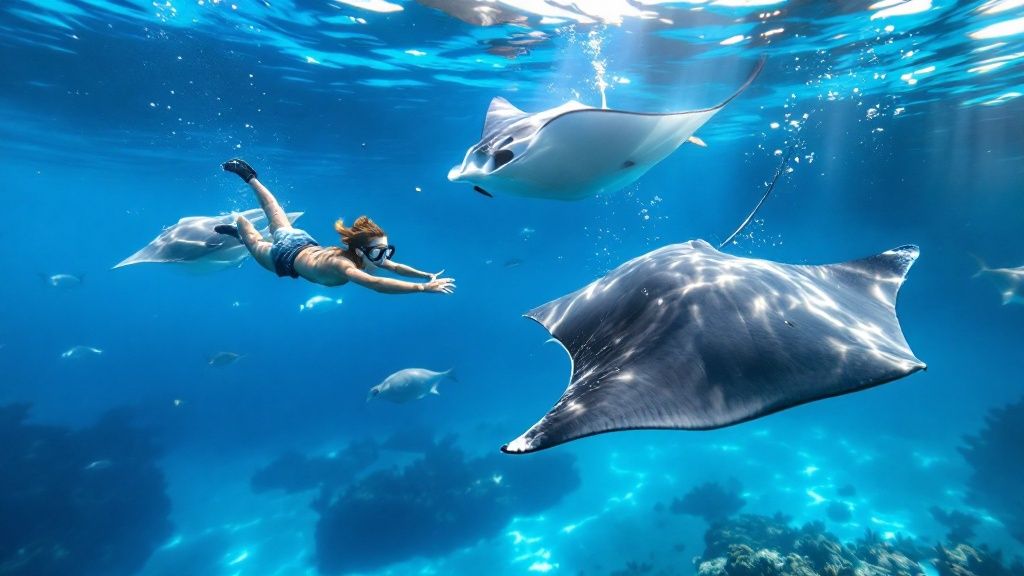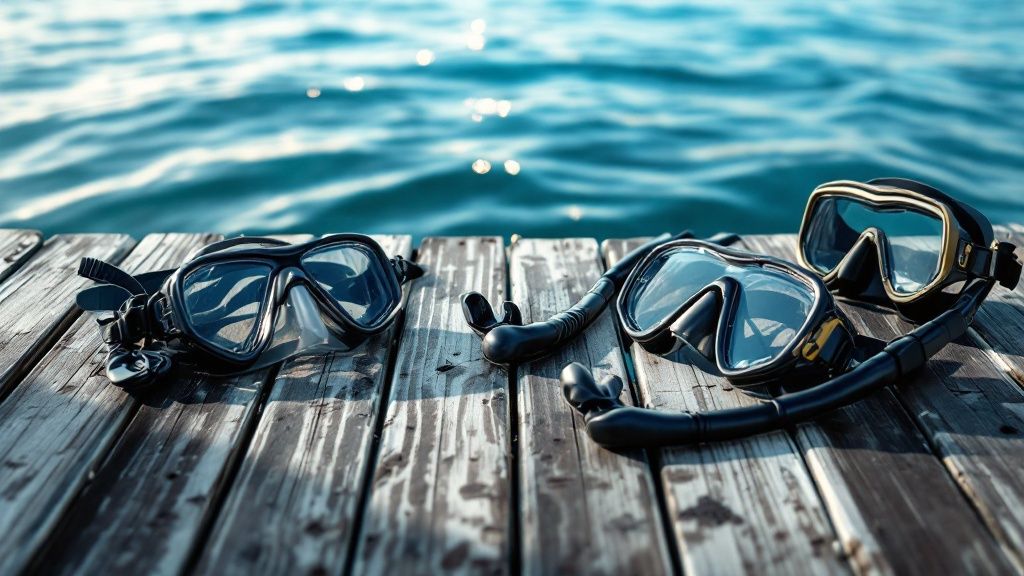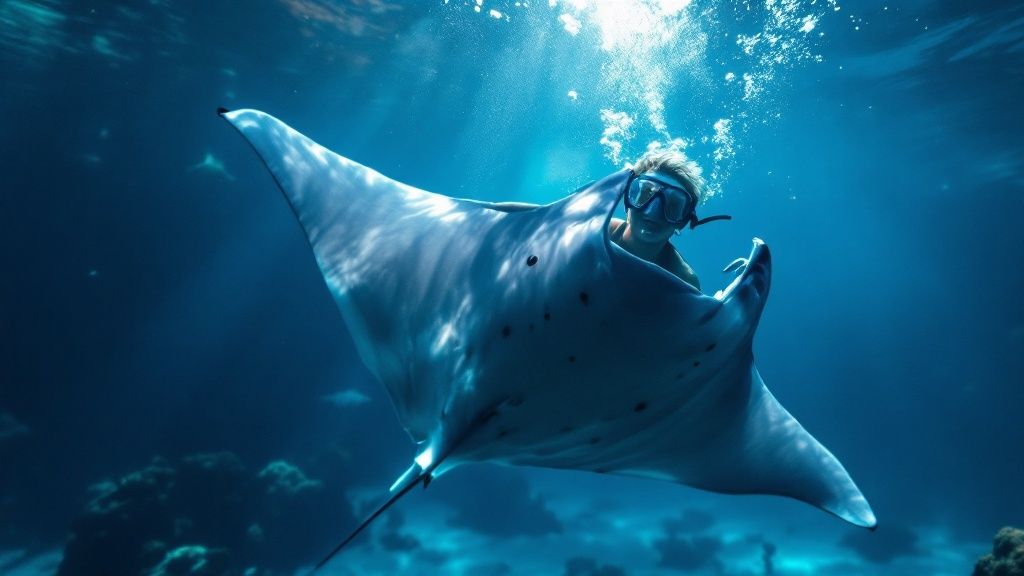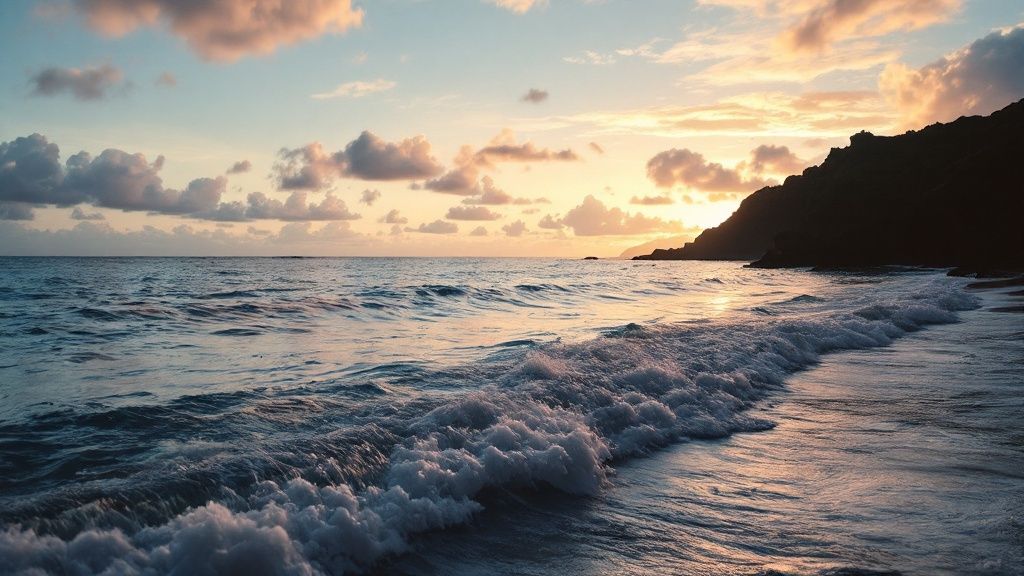Snorkel with Manta Rays Kona: Unforgettable Underwater Magic
- Byron
- Mar 26
- 11 min read
The Mesmerizing Magic of Manta Ray Encounters in Kona

Snorkeling with manta rays in Kona, Hawaii, is an experience that transcends ordinary water activities. It's a chance to connect with these gentle giants, some boasting wingspans of up to 16 feet, as they glide through the ocean. Their graceful movements, often likened to an underwater ballet, create a truly unforgettable spectacle. This unique encounter is consistently ranked as one of Hawaii's most sought-after adventures.
Why Kona Waters Attract Manta Rays
Kona's waters offer a perfect habitat for manta rays, supporting their nightly feeding rituals. The secret ingredient is plankton, a microscopic organism that forms the cornerstone of the manta ray diet. Kona's currents are rich in plankton, attracting mantas year-round and making Kona a reliable destination for these incredible encounters. No matter the season, the chances of witnessing this natural wonder remain high. The unique underwater topography of certain areas further enhances the appeal, creating ideal feeding grounds.
The Conservation Impact of Manta Ray Tourism
Manta ray tourism in Kona has evolved into a powerful force for conservation. The popularity of these tours has significantly raised awareness about the importance of protecting these magnificent creatures and their delicate ecosystem. An estimated 80,000 people snorkel and dive with manta rays in Kona each year, making it a major attraction. This high volume is attributed to the consistent presence of manta rays, drawn to the plankton attracted by tour operators' lights, leading to an impressive sighting success rate of 85-90%. To learn more about manta ray statistics, check out this article: 10 Things You May Not Know About Manta Rays. These encounters instill a sense of wonder and respect for marine life, inspiring many to become advocates for ocean conservation.
Experiencing the Magic Firsthand
A manta ray encounter in Kona is more than just a visual spectacle; it's a deeply moving experience. It's a chance to connect with intelligent creatures in their natural environment, fostering a profound appreciation for the wonders of the ocean. This connection can be truly transformative, shifting perspectives and creating a deeper understanding of our role in preserving these natural wonders for future generations. Interested in learning more? Check out our blog: Learn more in our article about our blog posts. From the boat ride to the in-water interaction, every aspect of the tour contributes to a profound and unforgettable experience.
Prime Manta Ray Viewing Locations in Kona Waters

Kona, Hawaii, is world-famous for its incredible manta ray snorkeling. But why are these waters so attractive to these gentle giants? The answer lies in a few key locations with unique features. These spots create the perfect environment for manta ray encounters, increasing your chances of a truly unforgettable experience.
Manta Village and Manta Heaven: The Famous Duo
Two spots consistently rank as the best for manta ray viewing: Manta Village and Manta Heaven. Manta Village, off the coast of Keauhou, and Manta Heaven, near the airport, have earned their reputations for good reason. The unique underwater topography and plentiful plankton attract mantas night after night.
Manta Village is known for its relatively shallow, calm waters. This makes it a great spot for both beginner and experienced snorkelers. Manta Heaven is a bit deeper and sometimes has stronger currents, offering a different but equally amazing experience.
Manta ray sightings at these locations are not only common, but also well-documented. Organizations like Manta Ray Advocates Hawaii have carefully tracked manta ray appearances, even identifying individual mantas. From 2009 to 2014, their work generated essential data for understanding manta ray behavior and predicting their activity. This research helps tour operators maximize sighting opportunities and ensure safety.
Exploring Beyond the Popular Spots
While Manta Village and Manta Heaven offer almost guaranteed sightings, Kona has other special places for a more private experience. These less-known locations often draw smaller crowds, providing a chance to connect with these graceful creatures in a more intimate setting.
Some areas north of Kona, for instance, provide exceptional viewing in calmer waters. These are a great option for families or anyone prone to motion sickness. Learn more about Kona snorkeling locations. Plus, these alternative spots showcase diverse underwater landscapes, adding another layer of enjoyment to your adventure. Each location has its own unique charm, allowing you to choose the experience that suits you best.
To help you select the perfect spot, here’s a comparison of the primary manta ray viewing locations in Kona:
Manta Ray Viewing Sites in Kona: Comparison of primary manta ray snorkeling locations, their features, and sighting rates
Location | Success Rate | Best Time | Depth | Crowd Level | Accessibility |
|---|---|---|---|---|---|
Manta Village | Very High (90-95%) | Sunset-Night | 10-20 ft | High | Easy (boat access) |
Manta Heaven | Very High (90-95%) | Sunset-Night | 20-30 ft | High | Easy (boat access) |
North Kona Sites | High (70-80%) | Sunset-Night | Varies | Low | Moderate (boat or shore access) |
This table summarizes the key features of each location. While Manta Village and Manta Heaven offer the highest success rates, North Kona sites provide a less crowded experience.
Choosing the Right Location for Your Snorkel
Picking the perfect spot depends on several things. Your comfort level in the water, preferred group size, and the specific underwater features you'd like to see all play a role. Water depth, current strength, and visibility can differ significantly between locations.
Some spots are shallow and calm, perfect for beginners. Others have deeper waters and stronger currents, which are great for more adventurous snorkelers. Understanding these differences will help you find the best spot for your needs and guarantee a truly memorable manta ray encounter.
Dawn Vs. Dusk: Timing Your Manta Ray Adventure

Choosing between a daytime or nighttime manta ray snorkel in Kona is more than just picking a time; it's about selecting a completely different experience. Each offers unique perks, from observing different manta behaviors to capturing distinct photographic opportunities. Let's explore these differences to help you plan your perfect manta ray encounter.
The Daytime Difference: A Relaxed Encounter
During the day, manta rays are often in conservation mode. This means they're saving energy, gracefully gliding through the water. They frequently visit cleaning stations, where smaller fish remove parasites. A daytime snorkel offers a calmer, more relaxed observation of these gentle giants. The sunlight provides excellent visibility, highlighting the intricate patterns on their backs and their effortless movements.
The Nighttime Spectacle: A Feeding Frenzy
As dusk arrives, the real magic unfolds. Under the cover of darkness, Kona's manta rays become active feeders. Plankton, their main food source, is attracted to the surface by lights, creating a captivating spectacle. Tour operators utilize specialized lights to draw plankton, creating a "campfire" effect. This illuminates the water and attracts the mantas.
This sets the scene for a surreal experience. Mantas perform acrobatic backflips and barrel rolls as they feast on microscopic organisms. This nighttime feeding frenzy is a must-see, offering a dramatically different encounter than a daytime snorkel. For those hesitant about snorkeling in the dark, the illuminated water actually improves visibility, making the manta rays even more captivating.
Photographic Perspectives: Light and Shadow
Daytime and nighttime snorkels each provide unique photographic advantages. During the day, natural light allows for vivid, detailed shots. Nighttime photography, however, requires different techniques. Flash photography is strictly prohibited, as it disrupts the mantas' natural behavior. However, the lights used by tour operators create a dramatic backdrop, perfect for capturing ethereal images of these graceful creatures in motion.
Price and Logistics: Factors to Consider
Price can be a deciding factor. Daytime tours are generally less expensive than nighttime excursions. The unique experience of the nighttime feeding frenzy, however, often justifies the extra cost. Logistics are also important. You might want to check out the tour times on the sitemap. Some tours combine sunset and nighttime experiences, allowing you to witness the shift in manta ray behavior.
Choosing Your Adventure: Dawn or Dusk?
The best time for your Kona manta ray snorkel depends on your preferences. Do you prefer a relaxed, sunlit observation or a dynamic nighttime spectacle? Consider your comfort level in the water, photography goals, and budget. No matter which you choose, snorkeling with manta rays in Kona is an unforgettable experience. It will leave you with a deep appreciation for these magnificent creatures.
Selecting the Perfect Manta Ray Tour Experience

Not all manta ray tours in Kona are the same. Choosing the right tour can elevate your snorkel with manta rays Kona experience from enjoyable to truly unforgettable. This guide will walk you through the key factors to consider when selecting a tour operator, ensuring a safe, enriching, and memorable encounter.
Key Considerations For An Unforgettable Experience
Finding the perfect manta ray tour involves assessing several crucial elements. These factors contribute significantly to the overall quality and value of your experience. From safety protocols to the guide's expertise, these considerations will ensure a positive and impactful encounter with these magnificent creatures.
Safety First: Prioritize operators with strong safety procedures. This includes certified lifeguards and well-maintained equipment. This emphasis on safety offers peace of mind, allowing you to fully appreciate the experience. Given the popularity of manta ray tours in Kona, choosing a responsible operator is essential. Check out the Manta Ray Viewing Safety guidelines for more information.
Expert Guides: Knowledgeable guides enrich the experience by providing insights into manta ray behavior and biology. Their expertise adds an educational layer to your adventure. A guide passionate about marine life can transform a simple viewing into a deeper understanding of these gentle giants.
Sustainable Practices: Support operators dedicated to sustainable tourism. Choosing eco-conscious businesses helps protect Kona's marine environment and the manta ray population. Responsible tourism is key to preserving these magical encounters for future generations.
Group Size: Smaller groups often create more intimate and personalized manta ray encounters. Consider the effect of group size on your overall experience. Fewer people in the water can mean less disruption to the mantas and increased opportunities for up-close observations.
Evaluating Tour Options: Budget Vs. Premium
Understanding the difference between budget-friendly and premium manta ray tours helps you make an informed decision. While cost is a factor, recognizing the added benefits beyond the price tag is crucial.
Budget-Friendly: These tours offer a fundamental experience, ideal for those focused on affordability. They typically have larger groups and fewer amenities. They still offer the chance to snorkel with manta rays Kona.
Premium: Premium tours provide additional benefits, such as smaller groups, experienced guides, high-quality equipment, and sometimes food and beverages. This enhanced experience may result in closer encounters and more individual attention.
Accommodating Diverse Needs
Manta ray tours should be accessible to all, irrespective of age or ability. Seek out operators that cater to various needs, from families with young children to seniors. Inclusivity ensures that everyone can experience the wonder of snorkeling with manta rays. For more on snorkeling in the area, see our guide on Kona Snorkeling.
Transparency And Booking
Before booking, thoroughly review the operator's cancellation policy, included amenities, and any potential extra fees. Transparency in pricing and services allows for informed decisions and prevents unforeseen costs. Being prepared is key to a seamless and enjoyable experience. Understanding the details, from included amenities to the cancellation policy, helps ensure your trip is as stress-free and magical as possible.
The Complete Manta Ray Snorkel Journey Revealed
Snorkeling with manta rays in Kona, Hawaii is an experience you won't soon forget. This guide details what you can expect on this incredible adventure, from the initial boat boarding to the magical moment you encounter these gentle giants.
Preparing For Your Manta Ray Encounter: From Shore to Sea
Your journey starts with a thorough safety briefing. This briefing covers essential topics, including proper snorkeling techniques, respectful manta ray etiquette (like not touching them), and what to do in case of an emergency. These precautions ensure both your safety and the well-being of the manta rays and their fragile ecosystem.
After the briefing, you'll enjoy a scenic boat trip to the designated snorkeling spot. Popular sites include Manta Village and Manta Heaven, two Kona locations famous for consistent manta ray sightings. The boat ride itself is a treat, offering beautiful coastal views and, if you're fortunate, even some whale watching depending on the time of year.
Entering the Water: A Smooth and Simple Process
Once you arrive at the snorkeling site, your guides will clearly explain the water entry process. This is typically a simple step or slide from the boat into the water. The guides are experts at making this process smooth and safe, even for those new to ocean snorkeling. You'll be provided with flotation devices, usually pool noodles, placed under your feet as you hold onto a specially designed, illuminated raft. This creates a "campfire" effect that attracts plankton, which in turn draws the manta rays closer.
The Manta Ray Ballet: An Unforgettable Spectacle
Get ready for the main event – the manta rays! These graceful creatures, boasting wingspans of 10+ feet, glide effortlessly through the water. They'll perform captivating underwater acrobatics, often circling the illuminated area to feed on the gathered plankton. The guides expertly position the raft, giving you an unparalleled view of this breathtaking display. You'll be just inches away from these majestic animals, creating a truly unforgettable connection.
Understanding the Experience: Duration, Conditions, and Equipment
A typical manta ray snorkel tour lasts around 1.5 to 2 hours, with roughly 20-30 minutes spent in the water with the mantas themselves. Water conditions are typically calm, especially in the designated areas, but can vary depending on the weather. Most tours provide all the necessary snorkeling gear, such as wetsuits, masks, snorkels, and fins. Bringing your own equipment is often welcome if it enhances your comfort.
To help you pack, here's a handy guide:
Before we dive into the details of what to bring, here's a quick look at the essentials and optionals for your manta ray snorkel adventure. This table outlines everything you should consider packing for a comfortable and enjoyable trip.
What to Bring For Your Manta Ray Snorkel
Item | Essential/Optional | Provided by Tour? | Notes |
|---|---|---|---|
Swimsuit | Essential | No | |
Towel | Essential | No | For drying off after the snorkel |
Reef-safe sunscreen | Essential | No | Protects your skin and the coral reefs |
Motion sickness medication | Optional | No | If you're prone to seasickness |
Underwater camera/GoPro | Optional | Sometimes | For capturing the experience, but flash photography is prohibited |
Personal snorkel gear | Optional | Usually | If you prefer using your own |
Warm layers for the boat ride | Optional | No | Nights can get chilly on the water |
After reviewing the table, you'll have a better understanding of what to pack for your upcoming manta ray snorkel experience. Be sure to check with your chosen tour operator for specific recommendations.
Contingency Plans and Peace of Mind
Most reputable tour operators offer a “manta ray guarantee.” This means that if you don't see any manta rays on your tour, you'll have the chance to join another tour for free on a different night. This policy provides peace of mind and shows the tour operators' dedication to delivering a truly remarkable experience. The guides are also trained to manage various situations, ensuring your safety and comfort throughout the entire journey. From pre-trip briefings to in-water guidance, everything is designed to maximize your enjoyment and create a lasting memory of Kona's majestic manta rays.
Capturing Manta Ray Magic: Photography Mastery
Snorkeling with manta rays in Kona offers an amazing chance to see these graceful giants up close. But how do you capture the magic of this nighttime encounter? This section explores underwater photography in challenging low-light conditions, offering tips for everyone from smartphone users to those with dedicated underwater cameras.
Mastering Night Marine Photography
Nighttime underwater photography presents unique challenges. The low-light environment requires specific camera settings and techniques for clear and captivating images. It's similar to how your eyes adjust to a dimly lit room – your camera needs similar adjustments to "see" effectively underwater at night.
Camera Settings: For low light, increase your ISO and use a wide aperture (low f-stop number) to allow more light into the lens. A slower shutter speed can also help, but watch out for blur from movement.
Movement Compensation: Mantas are always moving, so anticipate their motion and use a fast shutter speed to freeze the action. This is key for sharp images of their wing details. Think of capturing a hummingbird's wings mid-flight – similar principles apply to a manta's graceful movements.
Positioning: Position yourself to frame the mantas against the illuminated backdrop from the tour operator's lights. This creates dramatic contrast and highlights the mantas' size and shape.
Responsible Lighting and Equipment Care
Capturing stunning images is a priority, but responsible practices are paramount. Flash photography is never allowed, as it disrupts manta ray behavior and feeding patterns. You might be interested in learning more about Manta Ray Snorkel Photography.
Alternative Lighting: Use the ambient light from the tour's specialized lights to create dramatic and responsible images.
Equipment Challenges: Condensation, housing maintenance, and saltwater protection are common concerns with underwater photography. Make sure your equipment is properly sealed and maintained to prevent damage. Think of your camera housing as a spacesuit protecting your valuable equipment from the harsh underwater environment. Regularly inspect and clean your equipment after each use.
Professional Photography Services
Many operators offer professional photography services for those who prefer to fully immerse themselves in the manta ray experience without the technical distractions of photography. These professionals capture high-quality images, allowing you to savor every moment of your encounter. This offers a hassle-free way to capture stunning memories, leaving you free to connect with the manta rays.
Experience the Magic
Ready for an unforgettable underwater adventure? Book your Manta Ray Night Snorkel Kona Hawaii Tour today and see the magic of these gentle giants firsthand. Whether you're a seasoned photographer or simply want to enjoy the spectacle, a manta ray encounter is a truly memorable experience.
Comments